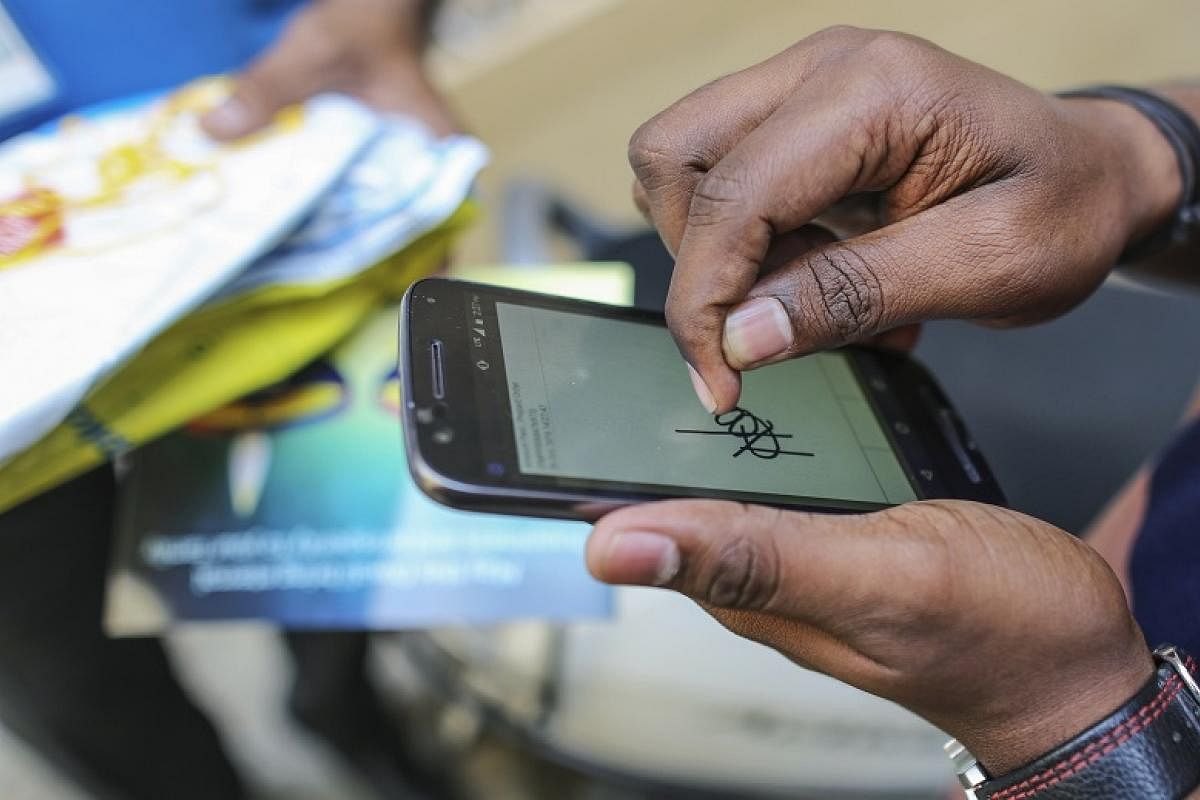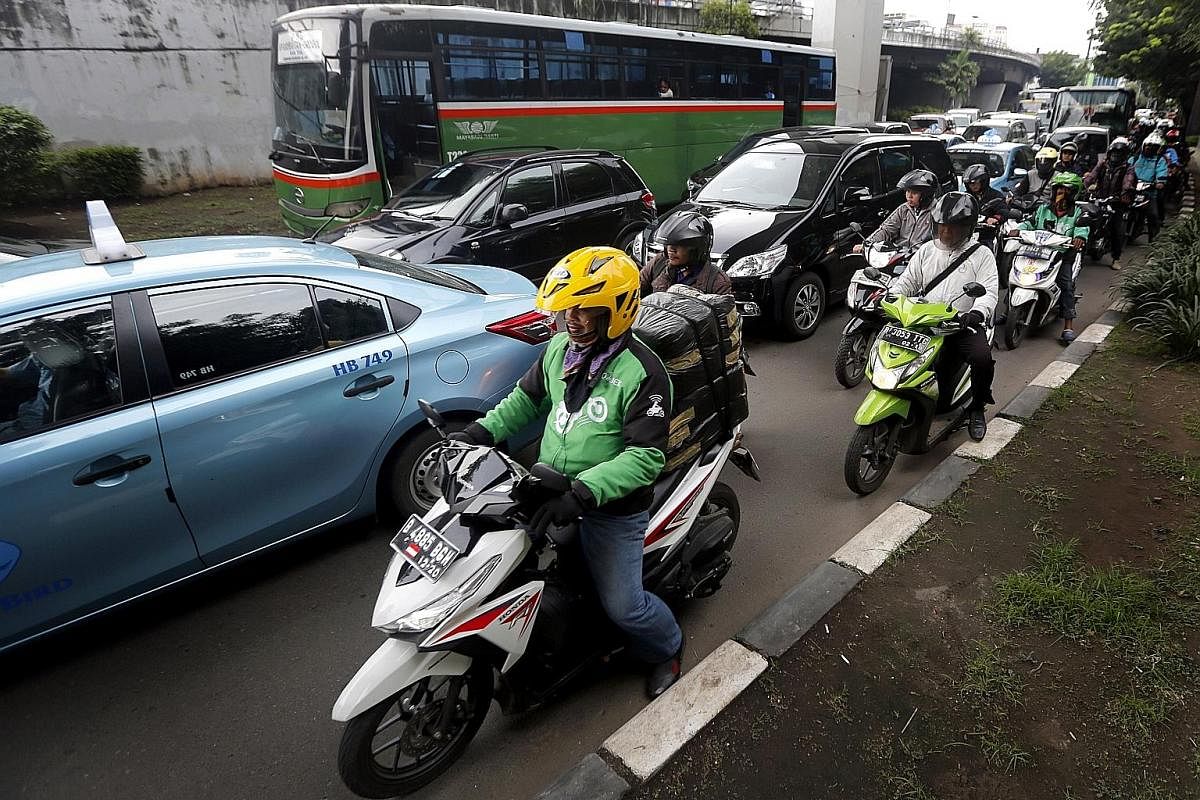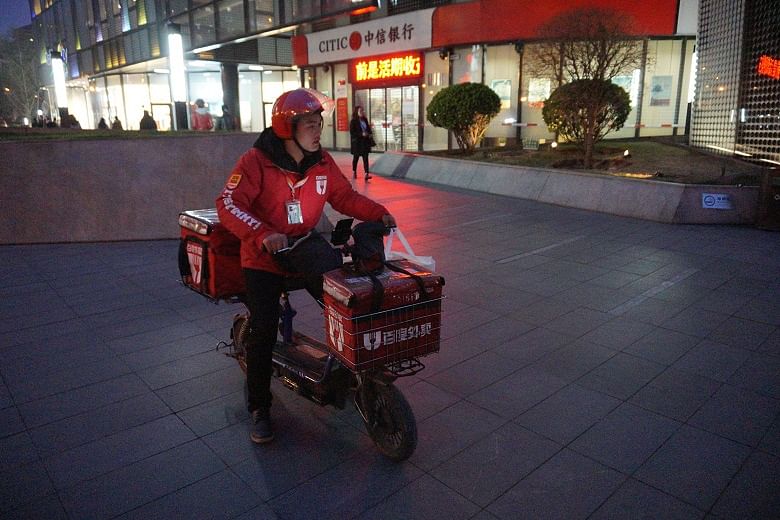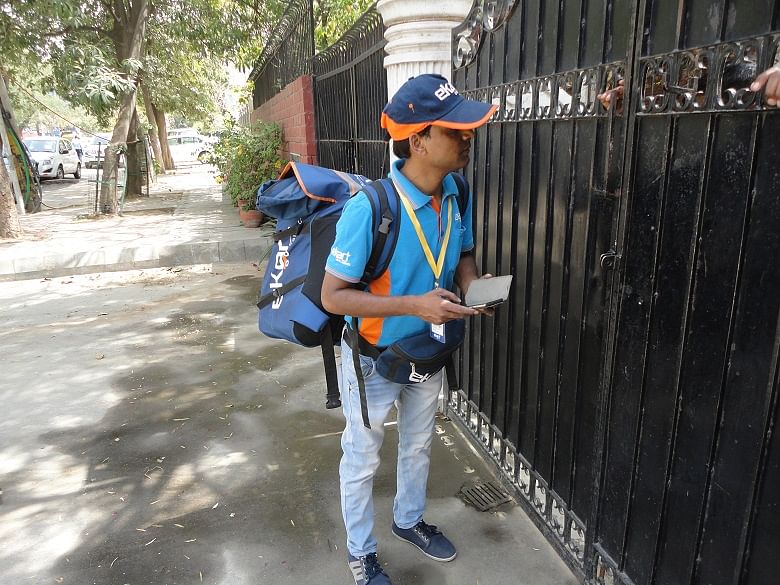
WORLD FOCUS
In Asia, e-biz clicks
As the Internet makes it simpler and faster for people the world over to shop, eat and do business - even order make-up or hijab styling online - energetic young working people are cashing in as easily and quickly as e-companies and e-customers. The Straits Times team of correspondents in Indonesia, China and India chased down some of them and - after catching a breath - brings you their stories.



Indonesia: Freelancers ride on motorcycle-hailing app's platform
Riding a Yamaha Fino with an oversized backpack strapped over her shoulders and a make-up trolley in front, Ms Astri Viriana looks like she is on a weekend road trip.

But her black vest with its little pink Go-Glam logo reveals her day job as a freelance make-up artist, linked to her customers via motorcycle-hailing start-up Go-Jek.
Married with two children, the 30-year-old quit her job at a salon last year to spend more time at home. She always wanted to be her own boss, but did not have the resources or a strong client base.

"Go-Glam has helped me realise my dream. My time is more flexible now as I can respond to orders in locations I choose," she says.
Go-Jek has taken e-commerce to the next level by linking clients to service providers - from companies to people aspiring to be their own bosses like Ms Astri.
-
INDONESIA'S E-COMMERCE: FACTS & FIGURES
-
37 million
-
Number of e-commerce consumers as of 2015, out of a total population of 255 million.
-
US$46 billion
-
Size of Indonesia's e-commerce market by 2025, up from 18 trillion rupiah (US$1.37 billion) in 2015.
-
SOURCE: WORLD ECONOMIC OUTLOOK, MCKINSEY & COMPANY, RESEARCH REPORT BY GOOGLE AND TEMASEK
Since its launch in January 2015, it has added over a dozen "verticals" to its core services, from cleaning house to ironing clothes to giving clients massages in the comfort of their own homes. Its Go-Glam platform, for instance, offers grooming services such as haircuts, make-up and manicures. Clients book a beautician and pay a small deposit online using the Go-Jek app.
In a country known for massive traffic jams, poor infrastructure and under-developed service sectors, such solutions cut the hassle and travel time for customers.
"Being locally focused really got us to understand customers very well," Go-Jek founder and chief executive Nadiem Makarim told The Straits Times. "Understanding the market really makes a difference."
Considered South-east Asia's digital powerhouse, Indonesia has an e-commerce market expected to reach US$46 billion (S$64 billion) by 2025, based on research by Google and Temasek Holdings. The World Economic Outlook estimated it at 18 trillion rupiah a decade earlier. Rising Internet penetration among young shoppers is fuelling explosive growth.
Small-time partners like Ms Astri gain greater flexibility. She sets her own prices - at 450,000 rupiah (S$48) for several hours of make-up and hijab styling, that is less than what her competitors charge. But in a free-market system, she still gains in terms of bookings. She gets four to five clients a month, and the gigs earn her 5 million rupiah or nearly double her former salary. She gives 15 per cent to Go-Jek.
Becoming a one-man show was not easy. To be a Go-Jek partner, she had to send in her portfolio, and go through an interview and theory and practical assessments.
She said: "I have to save up and fork out money to buy my own make-up. If it rains, I must cover everything in plastic before I ride out or everything will be ruined."
China: Hectic for delivery riders as online food orders boom
Sporting a bright-red helmet and a jacket bearing a fork in the logo, Mr Xie Geng stands out in the sea of white coats and blue scrubs.
Yet, no one gives him a second glance on a busy weekday morning as he zips across Dongzhimen Hospital in central Beijing with a delivery bag slung over one shoulder.
"Baidu Waimai," he calls out, rapping on a neurologist's door.
He hands over three knotted bags of food and runs back to his electric bike. The next order has already popped up on his phone.

Mr Xie, 18, is among some 20,000 Baidu Waimai delivery riders in Beijing. He sends food, drinks and fresh produce to residents who are taking to online takeaway in droves because of deep discounts created by cheap labour, smartphones and intense rivalry.
-
CHINA'S ONLINE FOOD DELIVERY: FACTS & FIGURES
-
3%
-
The sector's share of the pie in China's overall 5.14 trillion yuan (S$1.04 trillion) e-commerce market.
-
400%
-
How much bigger it is than South-east Asia's entire e-commerce market last year.
-
US$23.6 billion
-
Size of China's online-to-offline food delivery market last year, up 23 per cent from 2015. This is double the size of the United States' US$11 billion (S$15.3 billion) online food delivery market.
-
208.5 million
-
Number of people who ordered food online last year, up 85 per cent from 2015.
-
9 in 10
-
Proportion of people using the telephone to place the orders.
-
SOURCES: IIMEDIA RESEARCH, CHINA INTERNET NETWORK INFORMATION CENTRE
Last year saw over 208.5 million people order food online, an 85 per cent jump from 2015, according to the semi-official China Internet Network Information Centre.
One reason is the cutthroat competition among industry players with deep pockets. They have been burning cash and subsidising orders to build market share. Baidu Waimai, for instance, belongs to search giant Baidu.
Mr Xie fills his first order at 8am, but it is during the lunchtime peak period starting at 11am that things get frenetic.
"Most deliveries are to offices, for workers too busy to come out for lunch," says the Jiangsu native. "Some are to homes where people don't feel like cooking."
Be it pad thai, kimbap or raw pork, he picks it up and sends it to office blocks and hutong (ancient alleyways) in north-eastern Beijing's urban core.
The breakneck pace means that by the time things start to wind down at 3pm, Mr Xie has already filled 13 orders.
Even so, at 4 yuan (80 Singapore cents) per order, he has made barely enough to pay for one of the meals he has delivered. He is eligible for a daily basic wage of 100 yuan, but only if he fills at least 15 orders for the day or puts in a full 10 hours.
In all, this works out to a salary of about 5,000 yuan a month, half of which goes to rent, food and paying off his electric bike.
"I came here last month with 2,000 yuan, but it wasn't enough, and I had to borrow 3,000 yuan from friends and family," he said. "Money is tight but I hope things will get better."
Like the seven other deliverymen with whom he shares a one-room apartment, he grabs a quick lunch and nap before swopping out his bike battery for the evening dinner rush.
When he logs back on to the app at 5pm, a ding signals a new order, and he is back on the road.
India: 'Wishmasters' weave through traffic to fulfil orders
Dwarfed by a big blue bag on his shoulders, Mr Neeraj Prasad Jaiswal carefully manoeuvres between other vehicles on his Honda motorbike down a chaotic Delhi road.
It takes him 40 minutes just to negotiate a 4km stretch. When he hops off his motorbike in a leafy upmarket residential area and wipes the sweat from his face, he discovers that his first customer of the day has already left home and rescheduled the delivery for another day.
"Traffic is my biggest challenge. But it is a problem for everyone,'' says Mr Jaiswal with a shrug. As a deliveryman for Indian e-commerce website Flipkart, he delivers 35 to 40 packages a day. On his best day so far, he managed to deliver 60 packages.

His customers range from a driver who orders a phone and pays cash on the road outside the house where he works to a housewife who buys clothes and pays online.
"What's your name,'' asks the housewife, the only one in the day to ask his name as he effortlessly lifts his bag, which weighs at least 10kg, and hitches it to his shoulder.
-
INDIA'S E-COMMERCE: FACTS & FIGURES
-
1 MILLION
-
Number of people employed in different aspects of e- commerce.
-
13,000-25,000
-
Monthly wages, in rupees, of a deliveryman, or S$280-S$540.
-
US$120 BILLION
-
Size of the market by 2020, up from US$38 billion in 2016.
-
SOURCE: ASSOCHAM AND FORRESTER
Mr Jaiswal joined Flipkart 10 months ago and is one among thousands of "wishmasters", as the firm calls them, working against traffic amid intense competition between e-commerce companies that promise the fastest delivery for the most competitively priced products.
E-commerce is growing in India. More than 400 million Indians are already online in a population of 1.25 billion with 25 million Internet users being added every year.
Now firms are dependent on deliverymen, the one human element in the transaction as they try to woo customers with the best customer experience.
In the southern city of Bengaluru, 24-year-old Nagarjuna S., another Flipkart deliveryman and a commerce graduate, has just finished dealing with an irate customer.
"He was really angry and he started screaming abuse at me. He wanted a replacement but had chosen the wrong option online. So I explained what had happened and he calmed down after a while,'' says Mr Nagarjuna. "There was no point in both of us getting angry."
While his personal best is delivering 260 packages a day during the Big Billion Day sale - Flipkart's flagship sale in October - he makes around 150 deliveries a day.
"A lot of people are buying online. In the past I used to deliver 40 to 50 packages on average. Now it can go up to 150 a day,'' says Mr Nagarjuna, who on a warm Friday has delivered 68 packages in six hours.
"I don't feel the pressure anymore. I have the experience and I know how to talk to customers.''
Join ST's Telegram channel and get the latest breaking news delivered to you.
A version of this article appeared in the print edition of The Straits Times on April 25, 2017, with the headline In Asia, e-biz clicks. Subscribe
